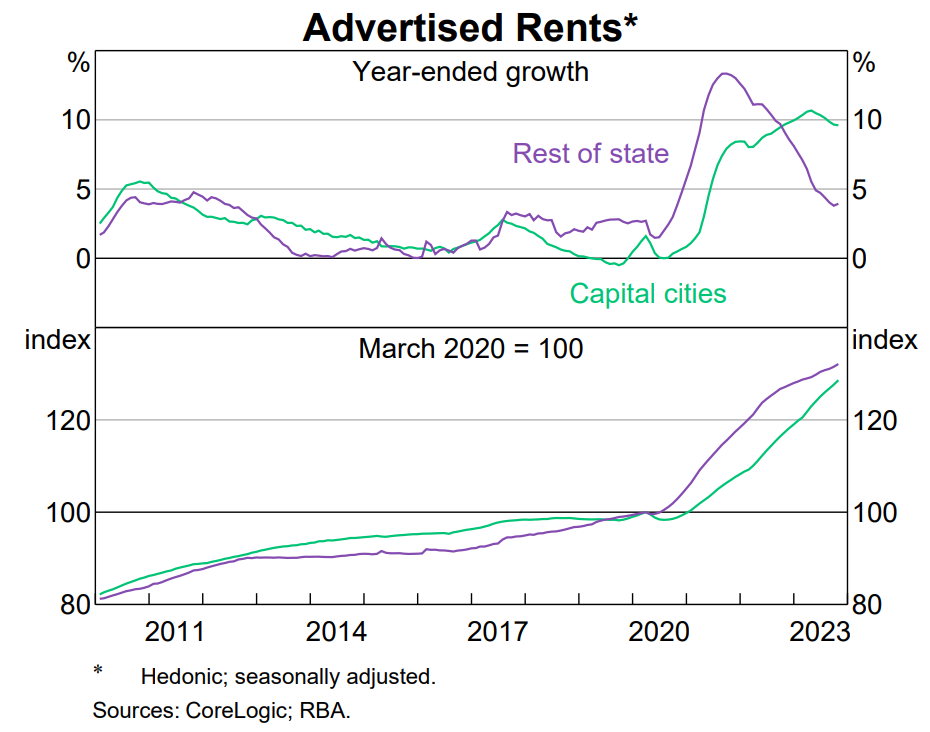The past few years have been the worst for household disposable incomes.
The latest ABS national accounts for the September quarter, released last month by the Australian Bureau of Statistics (ABS), reported a 6% decline in real per capita household disposable income, which fell to around 2011 levels:

Recent analysis from Michael Read at The AFR using OECD data to the June quarter of 2023 also showed that Australian households have suffered the biggest decline in incomes in the world:

New analysis from analysis from the ANU’s Centre for Social Research and Methods, cited in The Australian, has broken households into five income quintiles and found that middle-Australian households have suffered the biggest decline in disposable income.
“It shows the largest fall in living standards has been felt by the third (middle) and fourth (upper middle) household segments – families that typically have an after-tax income of between $100,000 and $150,000”, writes The Australian’s Patrick Commins.
“Reflecting in particular the rapid rise in mortgage costs, average annual after-tax household incomes in the centre of the earnings distribution have dropped from $105,200 in 2019, to $103,500 at the end of 2023 – a drop of $1700”.
By contrast, the bottom 40% of households have actually enjoyed a rise in incomes relative to the start of the pandemic, “reflecting policy changes that boosted welfare payments, alongside indexation of payment rates to inflation, which had run ahead of broader wages growth”.
This result seems counter-intuitive to me given the rapid rise in rents that has been experienced, which disproportionately harms lower-income households:

It is also contradicted by Finder’s latest Cost of Living Pressure Gauge, which shows 42% of renters are struggling to pay their rent, which is higher than the 37% of mortgage holders in the same position.
Nevertheless, ANU expects the situation facing households to improve later this year as inflation eases and the RBA begins cutting interest rates:
“Australian households in 2024 will enjoy a real pay rise of $1646, bringing the average across all incomes ranges to $113,750 and 1% higher than in 2019, the modelling shows”.
However, middle-income Australians will continue to lag behind, according to the ANU modelling:
“Households in the centre of the income distribution will be earning $864 less a year than five years earlier at an estimated $104,365 in real terms, a fall of 0.8%”.
We previously labeled the 2010s as a “lost decade” for Australian living standards (as confirmed by the first household income chart above).
The 2020s is shaping as an equally poor (if not worse) decade for Australian living standards.

